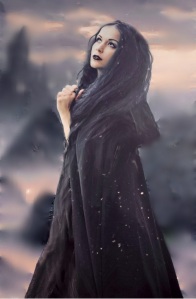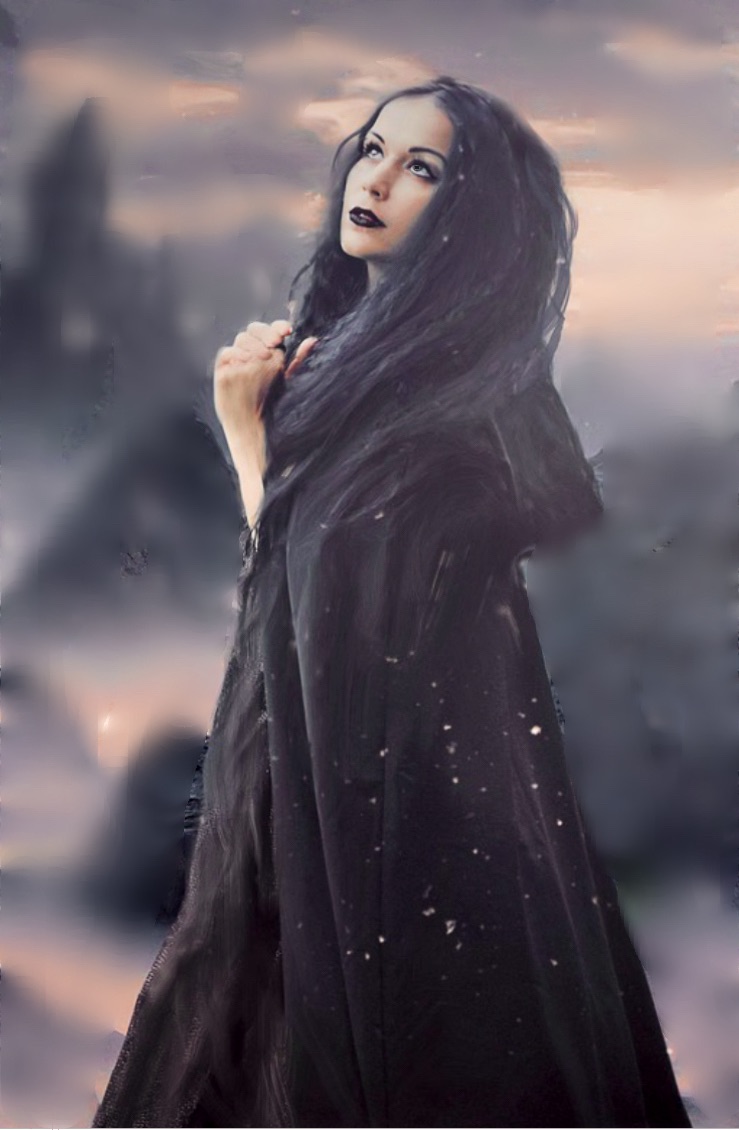
“The summer evening passed in a slow, bad dream for Warren. He suspected it was like pushing through the heavy sludge of a nightmare for all of them. Gran had been the one to help Iain into a standing position and support him into the kitchen, where she let him collapse into a chair. Warren followed, legs like lead poles, his mind a jungle in a fog. He felt useless.
“What’s happened?” Gran said. Her voice was harder and more direct than usual, her eyes bird-keen. Warren imagined her giving his father a talking-to when he was a small boy, after bullies beat him up in the school playground. “Tell me what happened, right from the beginning of it, bachgen.”
“It was… it was Jones who said it. The postman. He came past on his bike, when everyone was upstairs, and he… he said…”
“Said?”
“He said he saw George with a woman. Her.”
“Which woman?”
“The Lady of the Lake,” Warren murmured.
“What?” Iain looked at Warren askance, his hair sticking in all directions from the manic action of his fingers along his scalp. “What?”
“Nothing. Just thinking out loud.”
“Warren, if you know something–”
“No point talking about it now,” Gran said, shuffling into the hall and picking up the phone. “Now, we call the police. Talk later.”
Over the faint sound of her voice on the phone, Warren climbed the stairs and checked the landing. There was no sign of the Dark Rider having been there, let alone any hint of his defeat. No burns or scars on the carpet, no soot or lingering crow feathers in the corners, nothing marking the paint on the walls. Not even a smell. It was as if he had woken from one dream into another. His star wasn’t lying on the floor anywhere. It must have been consumed in King Ythr’s downfall.
He trod softly into the bedroom, holding his breath. He knew not what for. The dent from George’s body was still pressed into the blankets on the top bunk. He hadn’t made his bed. He never did.
Weary. He pulled himself up and burrowed under the duvet.
What felt like five minutes later, someone was patting him on the foot – his father, calmer now but still drained of colour, apart from his pink-rimmed eyes. The light outside was disappearing below the horizon. Somewhere, a crow squawked.
“War? Are you…?”
“I’m OK.” He sat up.
Iain sank onto the bottom bunk, his gaze lost in leagues of carpet.
“Are the police coming?” Warren had to know.
“They’re downstairs. If you want to, erm, compose yourself, then come down and answer what they need to ask you… that would be, ah…”
“Yep.” He dropped over the side and onto the floor, his pulse roaring in his ears. Were they going to blame him for what happened? What had happened? If he’d just chased the Lake-Witch away, that morning on his birthday, if he’d only refused to accept the star, told her to get lost, to find somebody else…
There was perfect silence as he descended. No small talk. It was all so serious.
Two police officers, one male, one female, sat side by side on the sofa like a game of spot-the-difference. The man was younger by at least twenty years, with a shaved head and tiny, bud-like ears. The woman was taut, lined, her mouth set in a severe, thin crease, her skin the ruddy brown colour of someone who spent a lot of time outdoors in all weathers. Gran was in her chair. Warren’s father rustled into place in the doorway.
“Hi, Warren,” the man spoke. There was a question in the greeting, as if he didn’t know whether Warren understood English…”
WHO WAS MORGAN LE FEY?
(Alternatively known as Morgana, Morganna, Morgaine, Morgaina, Morgane, Morgant, Morgante, Morgen, Morgein, Morgue, and Morguein).
A powerful and mysterious enchanter from Arthurian legend. In the earlier stories, her role was not fleshed out beyond that of a benevolent witch, faery, sorceror or goddess in charge of protecting King Arthur or being his saviour in some way.
Her character could have originated from Welsh myth. The earliest documented account by Geoffrey of Monmouth in “Vita Merlini” written ~1150, referred to a “Morgen” (meaning “sea-born” in Old Welsh or Old Breton) and associated her with Avalon (or the Isle of Apples) where King Arthur was carried after his fatal wounding at the Battle of Camlann. Geoffrey said that she was the leader of nine magical sisters not related to Arthur. These nine magical Queens could fly and shapeshift, and Morgen was said to be a great mathematician, having taught it (and astronomy) to her sisters. Her sisters names were Moronoe, Mazoe, Gliten, Glitonea, Gliton, Tyronoe, Thiten (Thitis), and Thiton (Thetis).
(Her name should not be confused with the Welsh masculine name Morgan, which was “Morcant” in Old Welsh.)
In early romances by Chrétien de Troyes, Morgan is a powerful healer. Many of the usually anonymous fairy-mistresses and maiden-temptresses found throughout Arthurian romance could be Morgan appearing in her different aspects.

ARTHUR’S SISTER?
In stories of the late 1100s, Morgan was seen as Arthur’s supernatural older sister.
In 13th-century prose cycles and later works based upon them, (e.g. Le Morte d’Arthur) she is the youngest daughter of King Arthur’s mother, Igraine, and her first husband, Gorlois. Therefore, Arthur, as the son of Igraine and Uther Pendragon, is Morgan’s half-brother. It was Thomas Malory who gave her the epithet “le Fay” or “le Fey” derived from the French “la fee” (the faery.)
Morgan’s sisters include Mordred’s mother, (Queen of Orkney).
Young Morgan marriesd Urien, though the relationship was not a happy one, and had a son named Yvain.
Morgan became an apprentice of Merlin, and was also an unpredictable and vengeful enemy of some of the Arthur’s knights, while nursing a particular disliking for Queen Guinevere. In these tales she was almost a sexual predator, seducing many men including Merlin and Sir Accolon, though she had an unrequited love for Sir Lancelot.
In some versions of the myths, Morgan was King Arthur’s arch-enemy, plotting to steal the throne and indirectly causing his death. She eventually made peace with Arthur, then took him on his final journey to Avalon.
Other medieval and Renaissance tales featured continuations of her history from Camlann’s aftermath as she became the immortal Queen of Avalon, sometimes with King Arthur ruling alongside.
From 1904 onwards, there were speculations that Morgan was connected with the shapeshifting Irish goddess of discord, The Morrigan.
After a span of absence, Morgan reappeared in stories from the 20th and 21st centuries. Her more contemporary character is often mixed up with that of her sister, now being regarded as the mother Arthur’s son Mordred, though Morgan herself was never Mordred’s mother in medieval tales.
A young Morgan le Fey appears a few times in “The Dark Rider,” slightly older than the main protagonist, Warren, but extremely superior and scornful. Most of her scorn is an emotional shield to hide how vulnerable she truly is, having run away from her foster-father in search of King Urhience of Gore, in the hopes that he can teach her magic. However, Urhience is a cruel man.
